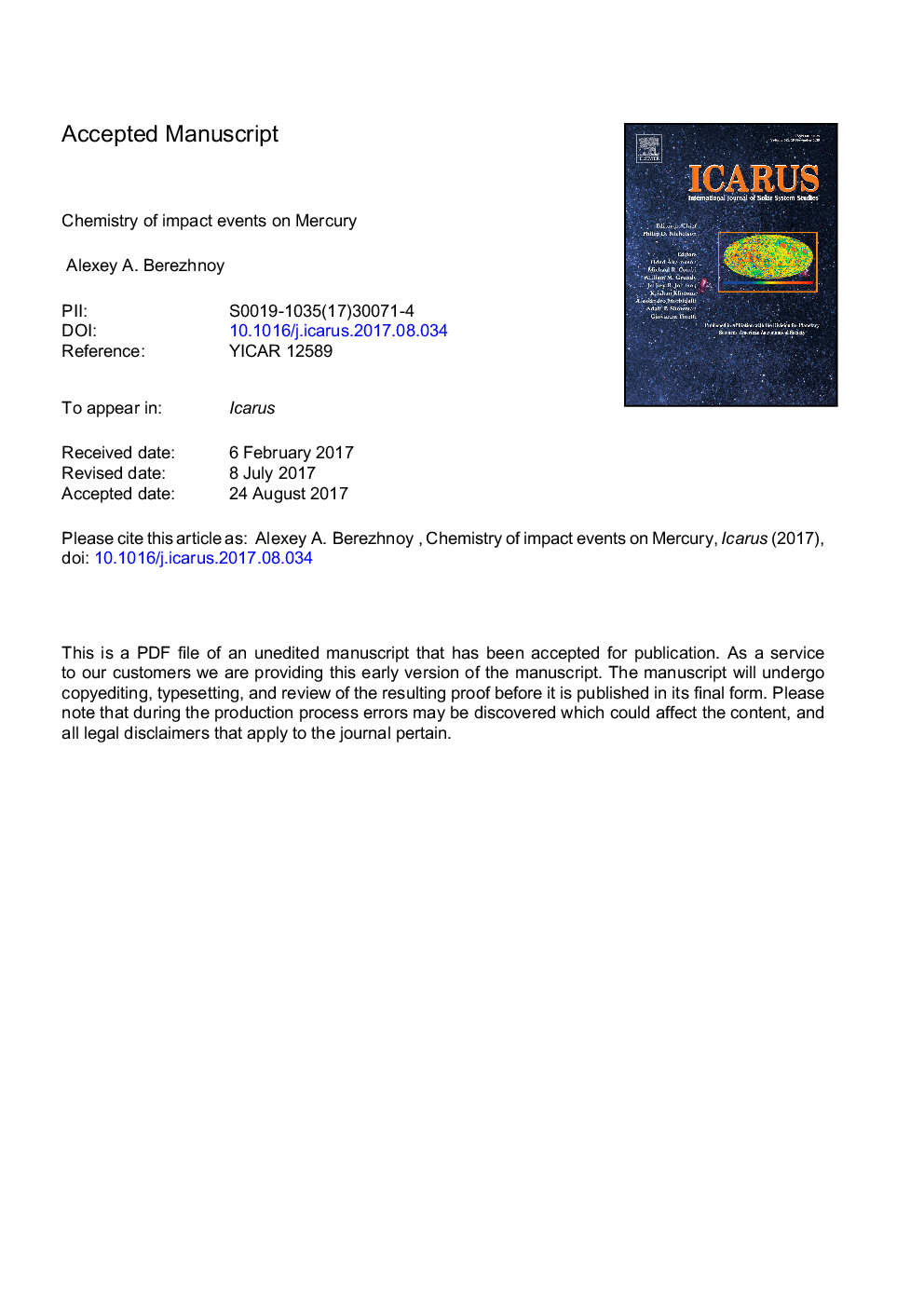| Article ID | Journal | Published Year | Pages | File Type |
|---|---|---|---|---|
| 5486947 | Icarus | 2018 | 52 Pages |
Abstract
Based on the equilibrium thermochemical approach and quenching theory, formation of molecules and dust grains in impact-produced clouds formed after collisions between meteoroids and Mercury is considered. Based on observations of Al, Fe, and Mn atoms in the exosphere of Mercury and new results of studies of the elemental composition of the surface of Mercury, quenching temperatures and pressures of main chemical reactions and condensation of dust particles were estimated. The behavior of the main Na-, K-, Ca-, Fe-, Al-, Mn-, Mg-, Si-, Ti, Ni-, Cr-, Co, Zn-, O-, H-, S-, C-, Cl-, N-, and P-containing species delivered to the Hermean exosphere during meteoroid impacts was studied. The importance of meteoroid bombardment as a source of Na, K, Ca, Fe, Al, Mn, Mg, and O atoms in the exosphere of Mercury is discussed.
Related Topics
Physical Sciences and Engineering
Earth and Planetary Sciences
Space and Planetary Science
Authors
Alexey A. Berezhnoy,
